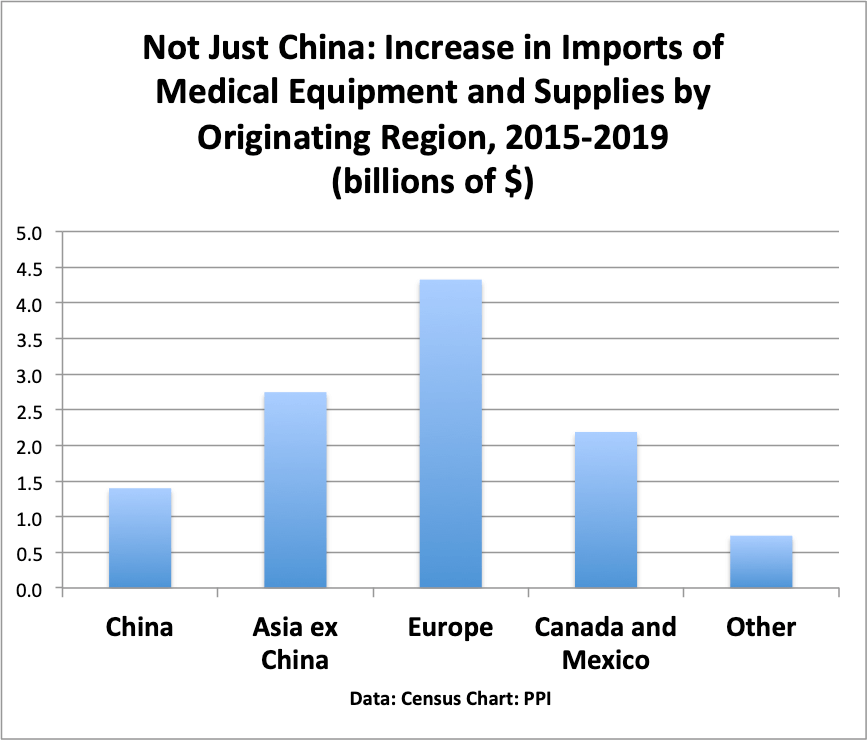As Congress passes its historic multi-trillion spending package, people across the country, as well as investors in our beleaguered financial markets, will breathe a sigh of relief. But the truth is, this “Phase 3” response to the pandemic-induced economic shutdown may just be the beginning of what we need to avert a savage recession or even depression.
Some experts, including St. Louis Federal Reserve President James Bullard warned that the nation’s GDP could fall by upwards of 50 percent in the second quarter alone. The first numbers showcasing the fallout dropped this week, with historic unemployment claims more than doubling economist’s worst fears at 3.3 million for the week.
Although it’s called a “stimulus” bill, the package is actually aimed at several urgent goals: Expanding the nation’s medical capacity to fight the contagion and treat its victims, putting money in Americans’ pockets and keeping businesses small and large from going under.
That’s essential, but we also need more of the traditional kind of stimulus intended to juice the economy. What comes next is for Congress and the Trump administration to address real stimulus- actions that use policy to activate increased economic activity.
For that -there is no better, more popular and bipartisan use of taxpayer funds than upgrading the nation’s transportation, communications and other infrastructure. And now, with unemployment spiking, it’s the right time to act at last on all those calls we hear every year during “Infrastructure Week” for a massive surge in public investment in our economy’s backbone.
Infrastructure Week has become a bad joke in Washington. It comes with great fanfare, wins praise from a bipartisan chorus of lawmakers and labor as well as business leaders — and then passes without anything changing. Perhaps now, with interest rates at nearly zero and lawmakers committed to spending whatever it takes to keep our economy afloat, infrastructure’s moment has finally come. And we should think big- upwards of one trillion dollars big.
Why? Because infrastructure investment yields the biggest bang for your buck when you have a higher jobless rate. The reason is what economists call the “multiplier effect,” which is basically a measure of how big a boost in economic output we get from each dollar spent. Creating new jobs and putting unemployed people back to work produces the strongest multiplier effect.
For example, take these estimates of multiplier effects from an economic scenario from S&P Global in 2016 on infrastructure investment (full disclosure- I was a co-author of the paper with Chief U.S. Economist Dr. Beth Ann Bovino):
“…an additional $150 billion in spending (spread evenly over eight quarters) would be fully returned to the economy within the first two years… and at least $189.5 billion to GDP in just the first few years. Additionally, this injection of funds would create roughly 307,000 infrastructure-related jobs in the first two years. Aside from the near-term boost, the country’s productive capacity and output would also likely increase once the infrastructure is built and absorbed into the economy-which means the investment would likely add jobs long after the initial effects have subsided…”
So what can numbers like this tell us about what would happen if we invest today, under the extraordinary circumstances of escalating unemployment? Well, in general, we can reasonably expect the unemployment rate to soon be higher than the 4.9% rate when the paper was written (October 2016), and general economic conditions to be softer. So those GDP returns and job estimates (proportional to the amount invested) could be on the lower end from what we might expect looking forward.
In a low unemployment scenario, which was the reality until the coronavirus hit, there’s too little slack in labor markets to generate high multiplier effects. In this scenario, you have lower overall output because you are essentially moving workers to infrastructure jobs from other jobs, as opposed to creating brand new ones and moving workers from unemployed to being employed.
Some immediate logistical problems come with quick action; for instance, can we even invest now at a time when most folks are forbidden from going to work? The answer is obviously no, but with a caveat. Infrastructure projects tend to have very long, multi-year lifecycles, with planning from engineers, environmental impact studies and permit bottlenecks, before the first shovel can even hit the ground. Additionally, it will take a long time- perhaps years- to work off the significant economic damage that is coming our way.
With even some of the longer estimates for how long it will take for life to return to “normal” running over 3 months, passing a trillion-dollar investment package soon still makes sense.
When looking for economic silver linings in a time of dour forecasts, and multiple trillion-dollar spending barely raises an eyebrow, it seems as good a time as any for a legitimate “Infrastructure Week”.




